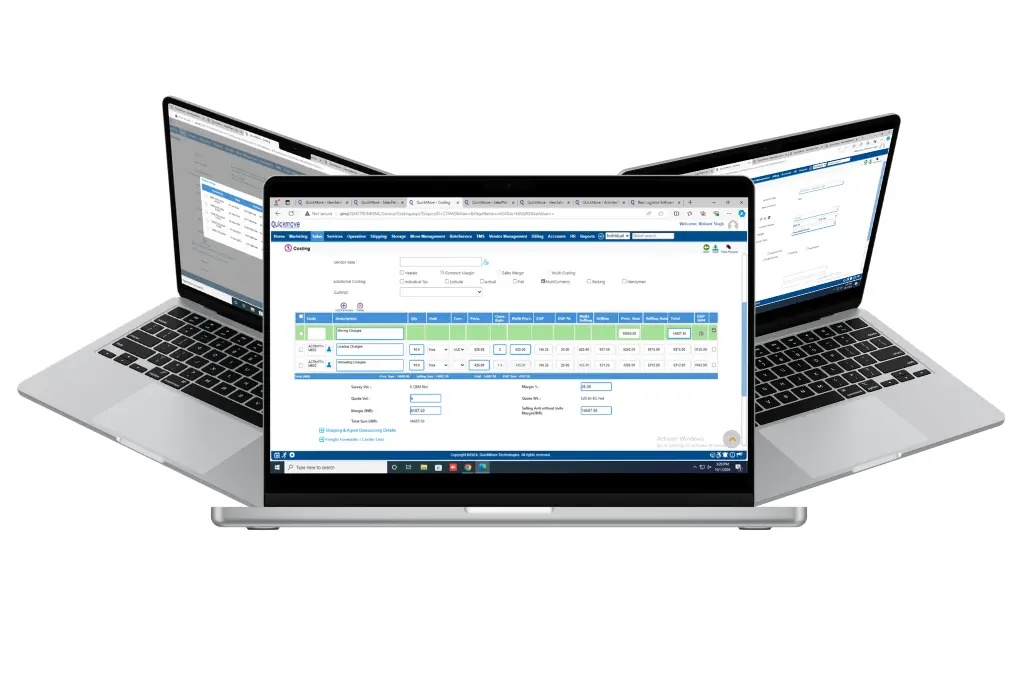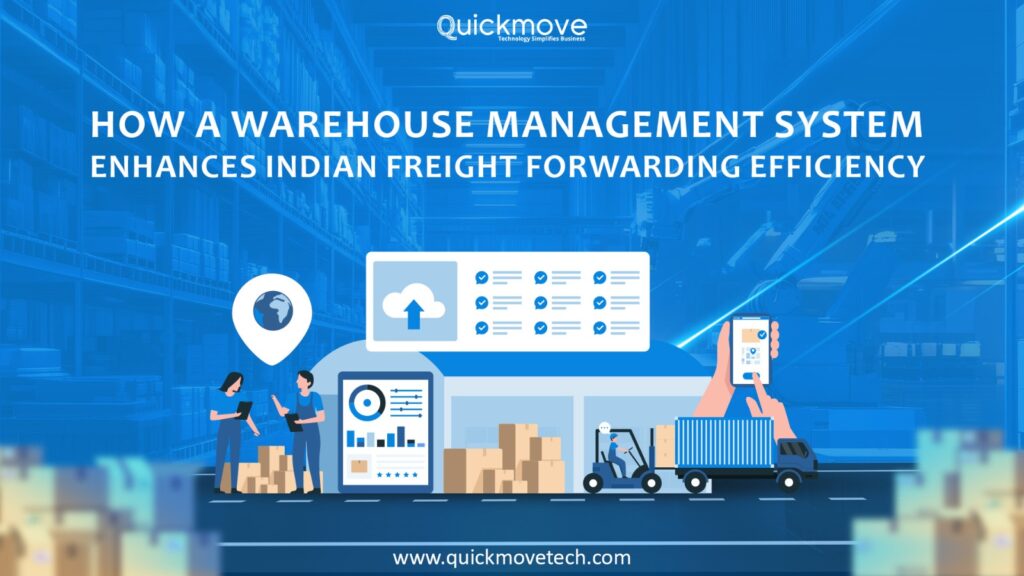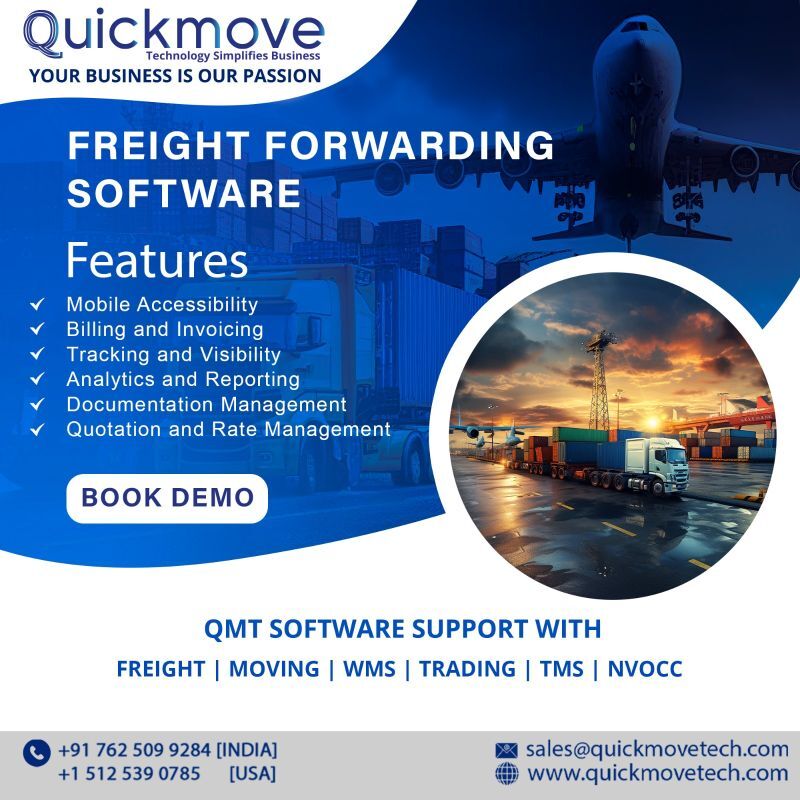Indian logistics is expanding at a historically record rate through an e-commerce boom, growing globalization, and infra expansion. With tight deadlines on which freight forwarding organizations operate, complex compliance processes, and tougher consumers, seamless handling by the warehouses is the most important goal. And here comes the warehouse management system in India into the picture.
A Warehouse Management System (WMS) is not just an inventory system—it is the center of the digital revolution in supply chains, equipping businesses with the power to automate processes, save costs, and drive service levels. Here are ways in which WMS is transforming freight forwarding in India, with live examples of industry leaders who are setting the trend.
What is a Warehouse Management System?
A warehouse management system is a computer program that assists in making and automating warehouse and distribution center operations. It automates functions like inventory tracking, picking and packing, space allocation, order processing, and shipment dispatch. When used in conjunction with freight forwarding software, it gives end-to-end real-time visibility into the supply chain.
The Growing Role of WMS in India’s Freight Ecosystem
As India’s logistics industry is expected to reach $380 billion by 2025, warehousing parks are making a surge throughout the nation. Prime locations such as Bhiwandi (Mumbai), Dadri (NCR), Sriperumbudur (Chennai), and Chakan (Pune) are now hosts to intelligent warehouses with feature-rich WMS systems. These warehouses are crucial in freight forwarding—particularly in third-party logistics (3PL) and fourth-party logistics (4PL) activities—where speed, precision, and compliance are vital.
Topmost Key Benefits of a Warehouse Management System in India
1. End-to-End Visibility of Inventory Throughout Warehouses
A WMS gives companies full control of the inventory of several warehouses in the master facility, with real-time visibility. This is flat-out essential to freight forwarders who have huge amounts of incoming and outgoing freight across different states.
Mahindra Logistics Example
Mahindra Logistics utilizes a cutting-edge WMS to manage multi-client inventory across its pan-India warehouse network. It has assisted them in maintaining high inventory accuracy and managing complex B2B and B2C order fulfillment for automotive, ecommerce, and FMCG customers.
2. Improved Order Processing and Turnaround Times Speed is the key to freight forwarding.
A WMS streamlines picking and packing, allocates work to warehouse workers, and plugs into TMS (transport management systems) directly for quicker dispatches.
Example: Delivery
One of India’s biggest integrated logistics service providers, Delhivery relies on WMS for high-volume, high-speed order processing. Their computerized Bangalore and Delhi NCR warehouses process over 2 million shipments a day, with shippers and customers getting real-time status messages.
3. Space Cost Optimization Enhanced
Indian city warehouse locations are costly. A WMS optimizes by using smart algorithms to suggest class-leading storage policies and avoid space wastage.
Example: Flipkart
Flipkart is employing AI-powered warehouse management systems in its customer fulfillment centers in cities like Hyderabad, Bengaluru, and Pune. WMS enables proper racking, slotting, and space planning, especially at times of increased demand like during Big Billion Days.
4. Enhanced Compliance and Documentation
India’s freight forwarding business has to cope with tight customs, GST, and E-Way Bill compliance. An Indian warehouse management system keeps track of all stocks moving and shipments and is compliant with government regulations.
Blue Dart Express: For example
Blue Dart’s WMS integrates with customs portals and generates real-time documentation, reducing paperwork error and enabling faster clearance at ports like Mumbai and Chennai.
5. Seamless Integration with Freight Forwarding Software
A freight forwarding software and WMS combination offers end-to-end visibility into logistics. It integrates warehousing activity with transportation, billing, communication with customers, and tracking deliveries.
Example: QuickMove Technology
QuickMove possesses an end-to-end software solution for logistics where its WMS interfaces directly with freight forward modules. How Warehouse Management System in India Enhances Freight Forwarding Efficiency.
Indian logistics are expanding at an unprecedented historical level with the aid of an explosion in e-commerce, growing globalization, and infrastructure expansion. With stringent timelines against which freight forwarders operate, complex compliance mechanisms, and better-off consumers, smooth handling by the warehouses remains a priority of the highest order. And it is here that the Indian warehouse management system comes into play.
 Email Us
Email Us

 Freight Forwarding Software
Freight Forwarding Software Moving/Removal Software
Moving/Removal Software Warehouse Management System
Warehouse Management System Transport Management System
Transport Management System Customer Service Portal
Customer Service Portal Move Survey Quote Pro
Move Survey Quote Pro Digital Logistics Inventory App
Digital Logistics Inventory App

